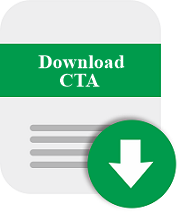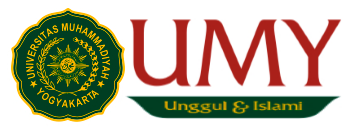Salam As Banking Financing for Agriculture in Developing Countries: Lessons From Sudan
Abstract
The objective of this study is to measure the impact of commercial bank financing via Salam mode of finance on the Sudanese agricultural production and determine whether the Salam mode is suitable for financing agriculture or not. For the purpose of the analysis, the ordinary least squares method (OLS) was applied to a log - linear form of a simple regression model with a time series data on Sudan’s total annual agricultural production as a dependent variable and the commercial banks total annual financing via Salam for explanatory variable. The empirical results indicated that Salam mode of finance is appropriate for financing agriculture in Sudan due to its significant effects on agricultural production with a significant and positive relationship. In addition, agricultural sector highly contributed to the country economy during the study period and highly positively elastic to bank financing. However, it is hindered by heavy direct and indirect taxes, high marketing cost, long distance with poor rural infrastructure and weak agricultural returns. Therefore, relevant policy implications for both agriculture and bank financing are required. Hence, results of study suggest that banks should increase the provision for Salam mode for high agricultural production, reduce tax burdens, renovate the infrastructure, and facilitate financing procedures to agricultural sector.
Keywords
Full Text:
PDFReferences
Abdel Aziz, S. A. (2004). Agricultural finance in the form of peace: an analytical study of the experience of Sudanese banks (M.Sc. Thesis). Sudan University of Science and Technology. Author. Retrieved on August 18, 2022, from http://repository.sustech.edu/handle/123456789/8536.
Abdullah, A. (2015). Agricultural finance by Salam mode, problems, and solutions. Journal oF Al- masrifi, (76), 30-63. Author. Retrieved on August 18, 2022, from http://search.mandumah.com/Record/728026.
Adam, B.E. (2003). On the experience of Islamic Agricultural finance in Sudan: challenges and sustainability (1st, ed.). Jeddah: The Islamic Research and Training Institute.
African Development Bank. (1996). Sudan Agricultural rehabilitation programme, 1(Project completion report). Author. Retrieved on April 19, 2021, from https://www.afdb.org/fileadmin/uploads/afdb/Documents/Project-and-Operations/ADB-BD-IF-96-184-EN-SUDAN-AGRICUL-REPORT.PDF.
Ahmed, A. (2018, May). Lecture on the Historical Narrative of the Agricultural Sector in Sudan. Paper presented in Workshop on Challenges Facing the Agricultural Sector. Ministry of Agriculture and Forests, Khartoum.
Ahmed, M., & Lorica, M.H. (2002). Improving developing country food security through aquaculture development—lessons from Asia. Food Policy, 27(2), 125–141.
Ammani, A.A. (2012). An Investigation into the Relationship between Agricultural Production and Formal Credit Supply in Nigeria. International Journal of Agriculture and Forestry. 2(1): 46-52. Author. Retrieved on August 22, 2021, from http://article.sapub.org/10.5923.j.ijaf.20120201.08.html.
Al-Desouki, M. A. (1230 AH). El-Desouki's footnote to the great explanation (2ed ed.). Beirut: Dar Al-Fikr.
Al-Harawi, M. A. (270 AH). Refinement of the language (1st ed.). Beirut: Arab Heritage Revival House.
Al-Hilali, M., & Khan, M. (1404). English Translation of the Meanings of the Noble Qur'an in the English Language (1st ed). Madinah Munawwarah: King Fahad Complex for Printing of the Holy Qur’n.
Al-Samarqandi, M. A. (540 AH). Tuhfat al-Fuqaha (2nd Edition. 1994 AD). Beirut: Dar al-Kutub al-Ilmiyya.
Arabi, M. H. (2018). Challenges Facing the Agricultural Sector. Journal of Al- masrifi. (88), 39 - 43.
Bamakhramah, A.S. (2003). Book Review: On the Experience of Islamic Agricultural Finance in Sudan: Challenges and Sustainability. Journal of King Abdulaziz University: Islamic Economics. 18(2), 63 -65. Author. Retrieved on August 18, 2022, from https://ssrn.com/abstract=3102336.
Bravo-Ortega, C., & Lederman, D. (2005). Agriculture and National Welfare Around the World: Causality and International Heterogeneity Since 1960. (Working Paper No. 3499). Washington, DC: World Bank. Author. Retrieved October 13, 2021, from https://openknowledge.worldbank.org/handle/10986/8903 License: CC BY 3.0 IGO.
Bougheri, A. p. a. (2005). The Risks of Islamic Commercial Financing Formulas in Saudi Banks (Doctoral thesis). Mecca: Umm Al-Qura University. Author. Retrieved on August 18, 2022, from http://iefpedia.com/arab/wp-content/uploads/2011/01/مخاطر-صيغ-التمويل-التجارية-الإسلامية-في-البنوك-السعودية-رسالة-دكتوراه-–-د.-عادل-بن-عبد-الرحمن-بوقري.pdf
Central Bank of Sudan. (2001-2019). Annual Reports. Retrived from https://cbos.gov.sd/en/publication-type/annual-reports. Khartoum: Sudan Coin Press Limited.
Ciat, B.L.M., & Ilri, B.L. (2013, June). Enhancing dairy-based livelihoods in India and Tanzania through feed innovation and value chain development approaches Assessing the dairy value chain and potential to enhance productivity through improved feeding in Pemba Island of Zanzibar. Paper presented at a conference. Nairobi. Author. Retrieved December 2021, from https://cgspace.cgiar.org/bitstream/handle/10568/51748/2013_MilkiIT_FEAST_Pemba.pdf;sequence=1.
Das, A. Senapati, M., & John, J. (2009). Impact of Agricultural Credit on Agriculture Production. Reserve Bank of India Occasional Papers. 30(2), 74-107.
De Soysa, I., Gleditsch, N. P., Gibson,M., & Sollenberg , M. (1999). To Cultivate Peace: Agriculture in a World of Conflict. Environmental Change & Security Project Report. 5, 15–25.
Florence, N., and Nathan, S. (2020). The Effect of Commercial Banks’ Agricultural Credit on Agricultural growth in Uganda. African Journal of Economic Review. 8(I), 162-175. Author. Retrieved on August 22, 2021, from https://www.ajol.info/index.php/ajer/article/view/192203.
Furuholt, B., & Matotay, E. (2011). The Developmental Contribution from Mobile Phones Across the Agricultural Value Chain In Rural Africa. EJSDC. 48(7), 1–16. Author. Retrieved on August 9, 2022, from https://onlinelibrary.wiley.com/doi/epdf/10.1002/j.1681-4835.2011.tb00343.x.
Gollin, D., Stephen P., & Rogerson, R. (2002). The Role of Agriculture in Development American Economic Review. 92 (2): 160 -164.
Gujarati, D. N., and Porter. D.C., (1978). Basic econometrics (5th ed.). New York: MC Graw-Hill.
Gujarati, D.N. (2004). Basic Econometrics (4th Ed.). New York: The McGraw−Hill Companies.
Havnevik, K. Bryceson, D. Birgegård, L. Matondi, P. & Beyene, A. (2007, March). African Agriculture and The World Bank, Development or Impoverishment? (A workshop Report). Stockholm: The Nordic Africa Institute and funding from the Swedish International Development Cooperation Agency. Author. Retrieved on August 19, 2022, from https://www.diva-portal.org/smash/get/diva2:275867/FULLTEXT01.pdf
Hudaifah, A., Tutuko, B., & awarjuwono, T. (2019). The Implementation of Salam-Contract for Agriculture Financing Through Islamic-Corporate Social Responsibility, Case Study of Paddy Farmers in Tuban Regency Indonesia. Journal of Islamic Economics. 11 (2), 223 – 246.
Kanu, E., Frimpong, K., Mpofu, N., & Rimal, P. (2013). An Overview of Sudan's Current Food and Agricultural Policies and Possible Reform Proposals. Author. Retrieved on August 11, 2022, from https://www.researchgate.net/publication/282565741_An_Overview_of_Sudan%27s_agriculture_and_Food_Policy_and_their_Current_Reforms.
Ibn Abidin, M. A. O. (1252 AH). Al-Muhtar's response to Al-Durr Al-Mukhtar (2nd Edition). Beirut: Dar Al-Fikr.
Ibn Majah, A. A. M. (273 AH). Sunan Ibn Majah. House of Revival of Arabic Books.
Ibn Muflih, I. M. (884 AH). The Creator in Explanation of the Persuasive (1st Edi.,). Beirut: Dar al-Kutub al-Ilmiyya
Ibn Rushd, M. A. (520 AH). The preambles (1st ed). Dar al-Gharb al-Islami.
Ibrahim, M. M. A. (2006). The effect of using financing formulas in developing production in the Sudanese agricultural sector: A case study of the Sudanese Agricultural Bank in Khartoum State for the period 2002-2006 (M.Sc. Thesis). Al-neelin University. Author. Retrieved on August 18, 2022, from http://search.mandumah.com/Record/829992.
Ibrahim, M. M. A. (2016). The Impact of Agricultural Financing on Economic Development in Sudan: Sudanese Agricultural Bank as Case Study from Period 1995 – 2015(M.Sc. Thesis). Omdurman Islamic University. Author. Retrieved on August 18, 2022, from http://search.mandumah.com/Record/788762.
Irungu, J. W. (2013). Relationship between Agricultural Credit Financing and Financial Performance: A Case of Small Scale Farmers in Kiria Division in Muranga County (Doctoral Thesis). The University of Nairobi.
Kaleem, A., & Ahmad, S. (2016). Bankers’ Perception towards Bai Salam Method for Agriculture Financing in Pakistan. In: Harrison, T. & Ibrahim, E. (eds) Islamic Finance. Author. Retrieved on August 18, 2022, from https://doi.org/10.1007/978-3-319-30918-7_5.
Lobao, L., & Meyer, K. (2010). The Great Agricultural Transition: Crisis, Change, and Social Consequences of Twentieth Century US Farming. Annual Review of Sociology. 27 (2001), 103-124.
Magigi, W. (2008). Improving Urban Land Governance with Emphasis on Integrating Agriculture Based Livelihoods in Spatial Land Use Planning Practise in Tanzania (Doctoral Thesis). Albert-Ludwigs-Universität.
Malik, Mushtaq, and Gill, (1991). The role of institutional credit in the agricultural development of Pakistan. The Pakistan Development Review. 4(2), 1039-1048. Author. Retrieved on August 22, 2021, from https://www.pide.org.pk/pdf/PDR/1991/Volume4/1039-1048.pdf.
Mnenwa, B.R., & Maliti, E. (2010). A Comparative Analysis of Poverty Incidence in Farming Systems of Tanzania (Special Paper 10/4). Author. Retrieved on November 10, 2021, from https://www.repoa.or.tz/wp-content/uploads/2020/07/10-4_web-1.pdf.
Mohammed El- Ameen, S.M.M. (2021). The Role of Agricultural Bank in Financing Agricultural Rotation’s Crop in New Halfa Agricultural Scheme, Kassala State, Sudan. An Applied Study During the Period 2010- 2020. El - Acil Journal for Economic and Administrative Research. 5(1), 300-317.
Mohammed, A.I., Ogunbado, A. F., & Aziz, A. B. (2016). The viability of Salam finance in the growth of agricultural production in Kano State, Nigeria. Asian Journal of Multidisciplinary Studies. 4 (12),87-92.
Mohammed, K.A., Mawhubi, E., & Gondi, N. (2021). Analytical Study of Financing policies for the agricultural sector in Sudan (1998 -2018). Les Cahiers du Cread, 37 (02),239-275.
Mualley, S. M. A. (2019). Contemporary Risks of Islamic of finance, and Hedging Methods; A Case Study of Sudanese Banks,2002 – 2012, (1st ed). Khartoum: Ministry of Higher Education and Scientific Research.
Mualley, S.M. A. (2020). The Impact of Islamic Banks in Agricultural Sector Production in the Sudan (2000 - 2015). Journal of Islamic Sciences and Arabic Language. 6, 267-294.
Mustafa, E., & Ndir, T. (2019). The role of Islamic banks in financing the agricultural sector, case of Sudan. Al-Bashaer Economic Magazine: 5(2), 279-300.
Musnad, M.M. (2012). Financing the agricultural sector in Sudan: challenges, risks and ways to address them. New economy. 7(1), 96-117. Author. Retrieved on August 20, 2022, from https://www.asjp.cerist.dz/en/article/12669.
Ogunbado, A. F., & Ahmed, U. (2015). Bay' Salam as an Islamic Financial Alternative for Agricultural Sustainability in Nigeria. Journal of Islamic Economics Banking and Finance. 11(4), 63-75.
Ogbuabor, J. E. and Nwosu, C. A., (2017). The Impact of Deposit Money Bank’s Agricultural Credit on Agricultural Productivity in Nigeria: Evidence from an Error Correction Model. International Journal of Economics and Financial Issues. 7(2), 513-517. Author. Retrieved on August 22, 2021, from https://dergipark.org.tr/en/download/article-file/365910.
Okwuchukwu, O. (2022). Agricultural Financing and Agricultural Sector Output in a Developing Economy: The Nigerian Experience. Amity Journal of Management Research. 5(1), 36 -51.
Praburaj, L. (2018). Role of Agriculture in the Economic Development of a Country. Shanlax International Journal of Commerce. 6 (3), 1–5.
Rahma, A.A. (2008). The application of Salam mode in the rain-fed agricultural sector in Sudan: an evaluation study for the period 1990-2007 (M.Sc. thesis). Omdurman, Omdurman Islamic University. Author. Retrieved on August 20, 2022, from https://search.emarefa.net/ar/detail/BIM-353200.
Rosegrant, M.W., & Hazell, P.B.R. (2000). Transforming the Rural Economy in Asia: The Unfinished Revolution (1st ed.). New YORK: Oxford University Press INC.
Saiti, B., Afghan, M., & Noordin, N. (2018). Financing agricultural activities in Afghanistan: a proposed salam-based crowdfunding structure. ISRA International Journal of Islamic Finance. 10(1), 52-61. Author. Retrieved on August 9, 2022, from https://doi.org/10.1108/IJIF-09-2017-0029.
Saiti, B., Afghan, M., & Noordin, N.H. (2017). Financing agricultural activities in Afghanistan: a proposed Salam-based crowdfunding structure. ISRA International Journal of Islamic Finance. 10 (1), 52-61. Author. Retrieved on August 18, 2022, from https://doi.org/10.1108/IJIF-09-2017-0029.
Saleem, M. A., & Jan, F. A. (2011). The impact of agricultural credit on agricultural productivity in Dera Ismail Khan (District) Khyber Pakhtunkhwa Pakistan. European Journal of Business and Management. 3(2), 38-44.
Salvatore, D., & Reagle, R., (2001). Theory and Problems of Statistics and Econometrics (2ed ed.). New York: MC Graw-Hill.
Stephen L.H (1995). Capital accumulation and the growth of aggregate agricultural production. Journal of Agricultural Economics. 6(2), 129-157.
Suleiman, A. E. (2013). The Reality of Banking Financing for the Agricultural Sector in Sudan. Journal of Al- masrifi. 69, 8-17.
Supreme Authority for Sharia Supervision of Banks and Financial Institutions. (1997). Fiqh guides (1st ed.). Khartoum: Dar Al-Asala for Printing, Publishing and Distribution Ltd.
Tenaw, S., & Islam, K. Z. (2009). Rural financial services and effects of microfinance on agricultural productivity and on poverty. Discussion Papers no. 37. Helsinki: University of Helsinki. Author. Retrieved on August 11, 2022, from https://www.findevgateway.org/sites/default/files/publications/files/mfg-en-paper-rural-financial-services-and-effects-of-microfinance-on-agricultural-productivity-and-on-poverty-2009.pdf.
The Accounting and Auditing Organization for Islamic Financial Institutions (AAOIFI). (2001). Sharia'ah standards (1st ed). Manama.
The International Bank for Reconstruction and Development. (2007). Agriculture for development. World development report,2008. Washington, Dc: World Bank. Author. Retrieved on August 19, 2022, from https://openknowledge.worldbank.org/bitstream/handle/10986/5990/WDR%202008%20-%20English.pdf.
Udoka, C. O., Mbat, P. D. O., & Duke, S. B. (2016). The Effect of Commercial Banks’ Credit on Agricultural Production in Nigeria. Journal of Finance and Accounting, 4(1), 1-10. Author. Retrieved on August 22, 2021, from http://pubs.sciepub.com/jfa/4/1/1/.
Youssef, A. M. N. (2009). The impact of agricultural financing on agricultural production in West Darfur state: by application to the branches of the Sudanese Agricultural Bank - Zalingei - El Geneina - Karsala 2000 - 2007(M.Sc. Thesis). Omdurman Islamic University. Author. Retrieved on August 18, 2022, from http://search.mandumah.com/Record/565628.
Yusuf, A.J. (2017). Islamic economics and finance in Sudan: An overview (Report No. 4). Istanbul: Research Center for Islamic Economics.
Zakaria M., Jun W., & Khan M.F. (2019): Impact of financial development on agricultural productivity in South Asia. Agricultural Economics – Czech. 65, 232–239.
DOI: https://doi.org/10.18196/ijief.v5i2.13750
Refbacks
- There are currently no refbacks.
Copyright (c) 2022 International Journal of Islamic Economics and Finance (IJIEF)

This work is licensed under a Creative Commons Attribution-ShareAlike 4.0 International License.
International Journal of Islamic Economics and Finance (IJIEF)
International Program for Islamic Economics and Finance
Department of Economics
Faculty of Economics and Business
Universitas Muhammadiyah Yogyakarta
Pascasarjana Building, Ground Floor
Jl. Brawijaya (Ringroad Selatan), Kasihan, Bantul
D.I. Yogyakarta 55183, INDONESIA
Official email: ijief@umy.ac.id












1.jpg)